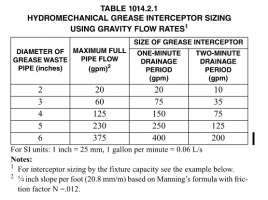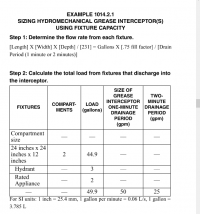VLADIMIR LEVIN
REGISTERED
I'm in NY, relevant code is 2020 PCNYS. I'm trying to size a grease interceptor for a 3 compartment sink.
Is there anything in the plumbing code other than the grease interceptor being based on the flow rate?
Reason for the question is, I'm calculating a flow rate of 50 GPM which would require a 100 lb capacity interceptor.
I can't fit that in my space.
My calculation is based on the flow rate of all 3 sinks, but in use they wouldn't all be draining at the same time, right?
Is it valid to size the interceptor based on the flow rate from one sink?
Is there anything in the plumbing code other than the grease interceptor being based on the flow rate?
Reason for the question is, I'm calculating a flow rate of 50 GPM which would require a 100 lb capacity interceptor.
I can't fit that in my space.
My calculation is based on the flow rate of all 3 sinks, but in use they wouldn't all be draining at the same time, right?
Is it valid to size the interceptor based on the flow rate from one sink?




